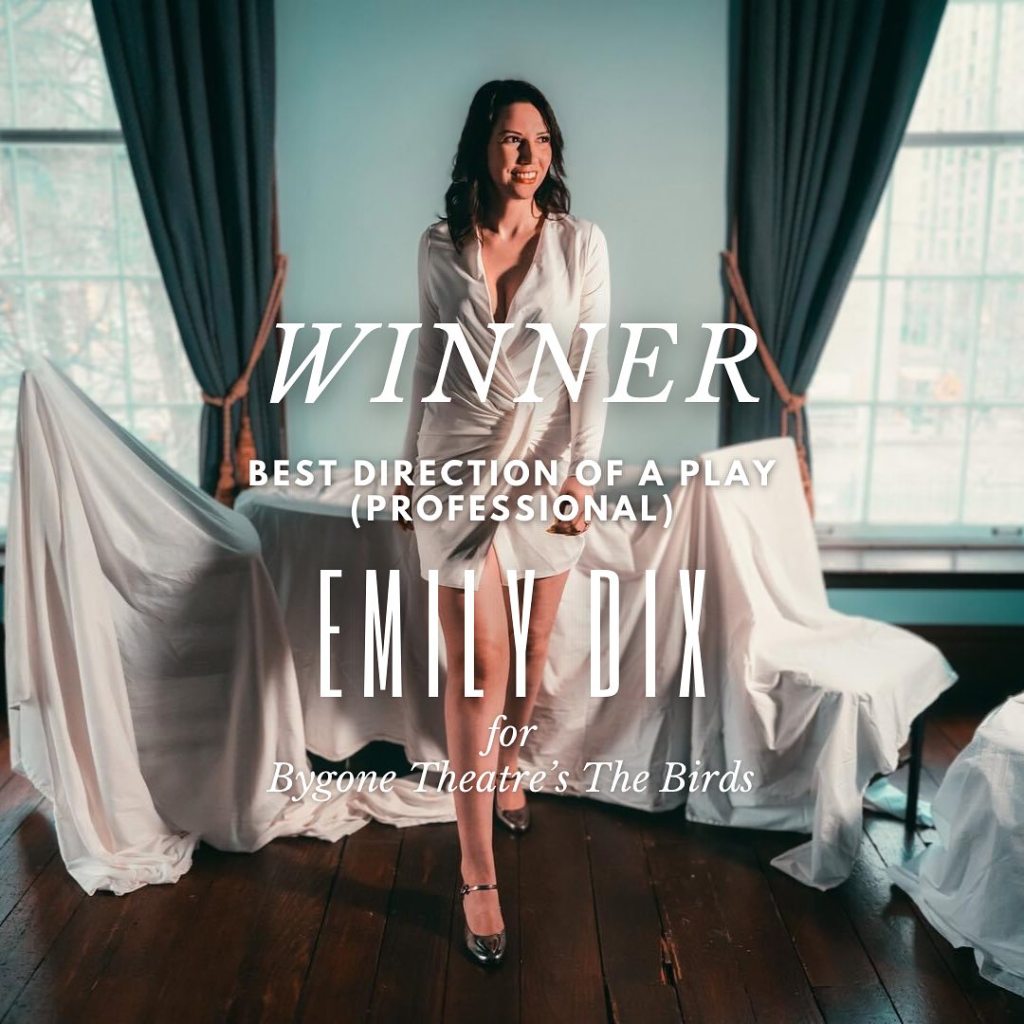THE REAR WINDOW
Hart House Theatre Presents the Award Winning Bygone Theatre Production
FOR IMMEDIATE RELEASE: TORONTO, ON (Tuesday, April 2, 2024), nominated for eleven and winner of four Broadway World Toronto Awards after its original 2019 run, Bygone Theatre’s The Rear Window is returning to the stage as our biggest production yet. Based on the short story It Had To Be Murder by Cornell Woolrich, the same tale that inspired the 1954 Hitchcock film, Rear Window (James Stewart, Grace Kelly), The Rear Window takes a new look at this classic tale of a “peeping Tom” who saw more than he wanted to see. A gripping, psychological thriller that will leave you guessing until the final moments whether or not what we’re seeing can truly be believed.
“(an) engaging and unexpected take on a story many of us thought we knew“
– Glenn Sumi, NOW Magazine
“a tense look into solitude and desperation…a strong thriller that takes cues from the best of the genre – and still finds ways to implant little
twists and turns to keep it fresh“
– Isabella Perrone, Broadway World, Toronto
Written and directed by Emily Dix (BWT Award Best Director: The Birds, The Rear Window). Starring Oliver Georgiou (The Birds, SODA Impro) as L.B. “Jeff” Jefferies; Kate McArthur (The Yellow Wallpaper, Macbeth) in her award-winning role as Lena Hall; Cayne Kitagawa (Alice in Wonderland, The Oresteia) as Charlie Thomas; with Antonino Pruiti (Beloved, Obliteration) reprising his role as the menacing Lars Thorwald. Featuring Simone Matheson, Rachel Frederick, Sean Jacklin, Trinity Lloyd, and Jacob Dowdall. Set and lighting design by Wesley Babcock; projection design by Bria Cole; assistant directed by Ayesha Maria Khan; stage managed by Julia Edda Pape. Assistant set designer Aria Kowal; assistant lighting designer Arianna Skirzynska; assistant scenic designer Athen Chloe Go; wardrobe assistant Olia Kashevarova. Produced by Conor Fitzgerald and Emily Dix; assistant producer Cass Iacovelli; producer-in-training Isabella Cesari. Made possible through a partnership with Hart House Theatre as venue sponsor and projection technology provided by Panasonic.
SHOW INFO:
VENUE Hart House Theatre, 7 Hart House Circle, Toronto
SHOW DATES May 15-31| Wed – Sat at 8 pm, Saturday matinees at 2 pm
PREVIEW Wednesday, May 15 & Thursday, May 16
OPENING NIGHT Friday, May 17
TICKETS | www.bygonetheatre.com/tickets
RECOMMENDED FOR Ages 13+ | Mature themes, simulated violence
MEDIA CONTACT:
Selin Cinemre, Marketing & Outreach Coordinator, marketing@bygonetheatre.com
Emily Dix, Artistic Executive Director, emily@bygonetheatre.com
-30-










